Rocky Mountain High-Fi
I've been trying for a couple of years to pay a visit to Ultimate AV contributors Steven Stone and J. Gordon Holt in Boulder, Colorado, but events always made me put it off. The catalyst that finally broke the logjam was the opportunity to schedule the trip concurrent with the second annual Rocky Mountain Audio Fest, held at the Denver Marriott Hotel from September 30 to October 2.
With the CEDIA trade show moving to Denver next year, that city is becoming quite the AV hub. But the RMAF is a very different sort of show—it's a consumer event. I counted about 115 exhibit rooms in all—much more than I expected—but even on Saturday the show didn't appear all that crowded. And imitation is indeed the sincerest form of flattery: the show supplemented its exhibits with a number of seminars and a few live music events, much like our own annual Home Entertainment shows.
I was under no illusions that the RMAF would be much of a home theater gathering, so it wasn't surprising to find it very much a two-channel stereo event. I counted perhaps five rooms with some sort of video display. But that was okay. I rarely get the chance to sit down to listen to high-end stereo systems at trade shows. CEDIA has no two-channel emphasis at all (the biggest outboard event, T.H.E. Show does have some two-channel exhibits, but is not an official part of CEDIA). And while I do try to spend part of a day during CES at the Alexis Park Specialty Audio digs, I'm always far too rushed. Our Home Entertainment show is an exception, but even there I can't linger long in many of the demos until I've covered all the home theater stuff, written my daily show reports, and prepared for seminars.
My main goal in Denver, apart from enjoying the more relaxed vibes that my more casual participation allowed, was to look for loudspeakers that might be worth reviewing in a home theater setting, together with the manufacturer's matching center channel (if available) and surrounds (or smaller speakers that could be pressed into service as surrounds). Interesting monoblock power amps were also on the scouting list.
By far the most bizarre, yet at the same time potentially revolutionary product (actually a prototype, not yet available) was the TRW 17 infrasonic woofer from Eminent Technology Incorporated. The driver is designed to be used in a large, infinite baffle. At the show ET positioned the driver in such a way that one hotel room acted as the enclosure, while it radiated sound into a second room from the open doorway that joined the two rooms together. As you can see from the photo, the driver looks like an ordinary fan. The fan blades, however, are connected to a moving voice coil and do the work of the cone in a more conventional woofer. They not only move back and forth like a cone, but the pitch of the blades is also modulated by the signal. Flat response is claimed to below 1Hz. Don't ask for more technical details just yet; with a patent pending, Eminent Technology's Bruce Thigpen was being just a little vague. At $12,900, and with the resistance of two-channel enthusiasts to subwoofers in general, this driver is clearly aimed straight at the custom home theater market. But smaller models are planned for the car stereo crowd. When I asked Bruce if one of these would work at home in a custom enclosure of perhaps four cubic feet, he said it would.
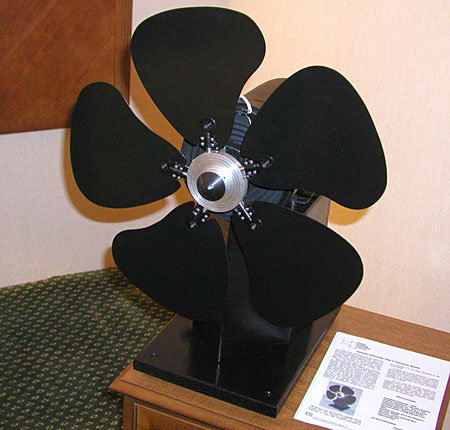
Eminent Technology TRW 17 Infrasonic Woofer
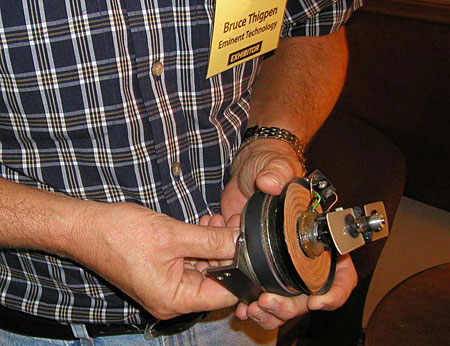
Eminent Technology TRW 17. As the voice coil moves in and out, linkages also change the pitch of the blades.
The big fan—er, sub—with a blade diameter I'd estimate at 17-inches was operational, and clearly produced audible, high level output to at least 17Hz. Below that its action was more obvious in the way it shook everything in the rooms and, below 10Hz, caused the rooms' walls to literally flutter back and forth like a sheet in the wind. Scary, but impressive. The distortion, as viewed on ET's test setup, remained commendably low down below 10Hz at high output. How it manages this with those fan blades supported on one end only is a mystery for another time. Perhaps the centrifugal force produced by the rotation keeps the blades from fluttering.
Three of the more conventional demos stood out for me as well. In the (relatively) affordable realm, Sonus Faber and Musical Fidelity combined to produce sumptuous sound from the Sonus Faber Concerto Domus speakers ($3500/pair), driven by Musical Fidelity's A5-series preamp, amp, and CD player ($2500 each for the CD player and preamp, $3000 for the power amp). A lot of exhibitors were getting funky bass in the hotel's small, thin-walled rooms, but not here. A home theater package anchored by the bigger Sonus Faber Grand Piano Domus in the left and right channels is scheduled for a UAV review.
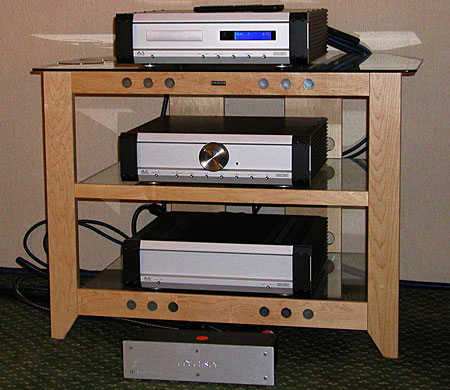
Musical Fidelity A5 System
My two other gold-star choices were both blessed with larger rooms. This was the first time I've heard B&W's big, diamond-tweeter Nautilus 800D flagship ($20,000/pair). Driven by Classe electronics, it was a bit warm through the midbass, but its huge soundstage, majestic bloom, clear midrange, and easy, unforced sound won me over. We plan to review a home theater system featuring the 800D early next year, if we can manage the formidable logistics—each 800D weighs about 300 lbs.!
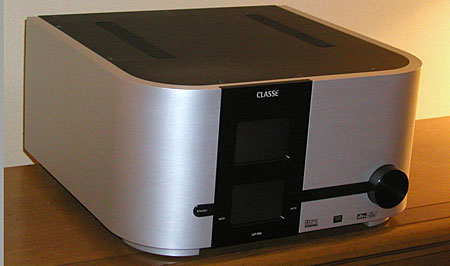
Classe's premier SSP-900 surround processor was on display, but not in operation.
Far less intimidating in size, but impressive in their own punchy, dynamic fashion were the new Audio Physic Scorpios ($6500/pair), driven by a Conrad-Johnson Premier 350 amp ($8000—all the amps mentioned here, unless noted otherwise, are two-channel). On the show's first day I heard these speakers with some unfamiliar recordings and wondered if their fast, dynamic sound might be just a bit over-the-top. The next day I returned with some of my own material, and determined that it was not. The Scorpio's balance not only suited the two-channel recordings I played, but the speaker also had the sort of unrestrained dynamics that can bring a home theater system to life. The C-J amp's rated 350Wpc (into 8 ohms) might well have contributed to this.
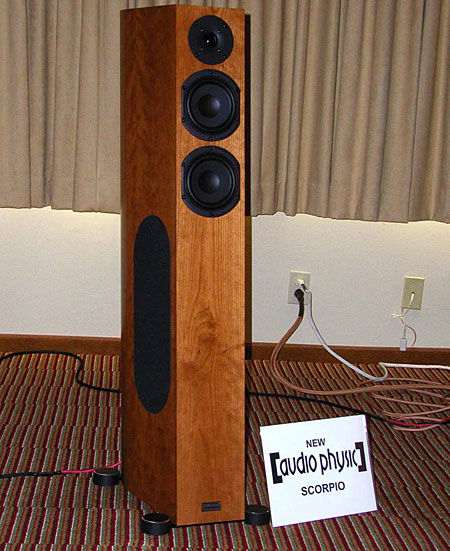
There were certainly other demonstrations that impressed me. The soon-to-be-launched Strata Mini floor-standing speakers from AV123 appear to be an exceptional value—they cost $1600/pair and look like $6000/pair, with other models to follow. The Neat Acoustics Ultimatum MFS monitor speakers were making good sound, and the company's new Motive series, not demonstrated but clearly aimed at the home theater enthusiast, caught my eye as well. The Cabasse Riva ($2000/pair) shares the exceptionally dynamic sound I've heard in the past from that French manufacturer's far more expensive models. Genesis showed their G7.1p bookshelf speakers (price TBD but likely under $3000/pair. Boulder unveiled the 850 (200Wpc into 8 ohms) monoblock amp, which will set you back $5000 each. Steven Stone is chomping at the bit to review five of them!
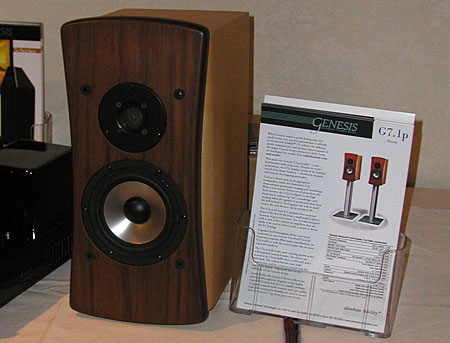
Genesis G7.1p
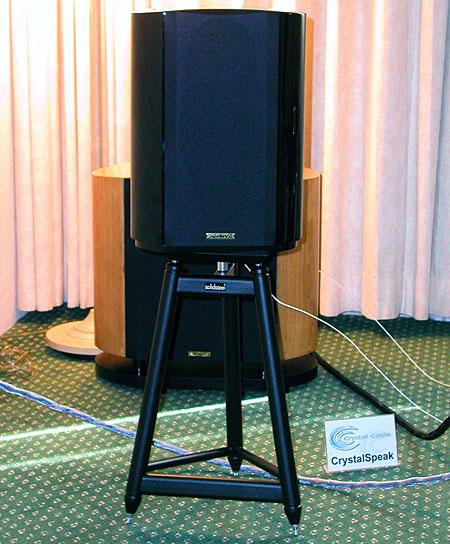
Cabasse Riva
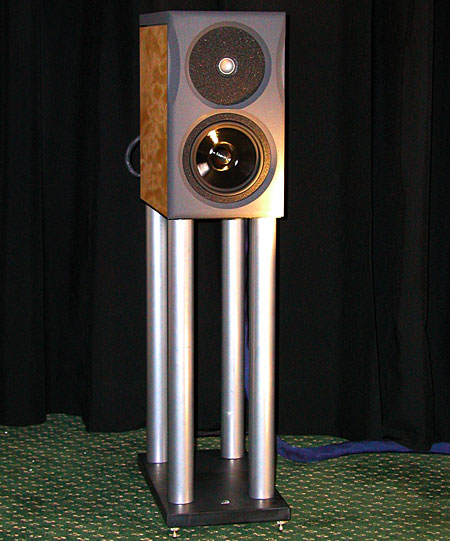
Neat Acoustics Ultimatum MFS
We don't always get the opportunity to actually audition speakers before requesting them for review, and the Rocky Mountain Audio Fest provided a good place to do just that. To get the chance to visit Steven Stone and his impressive home theater rooms, and sit in as he and J. Gordon Holt performed their monthly gig recording a Boulder Philharmonic concert on Saturday night, was just icing on the cake.
- Log in or register to post comments










































